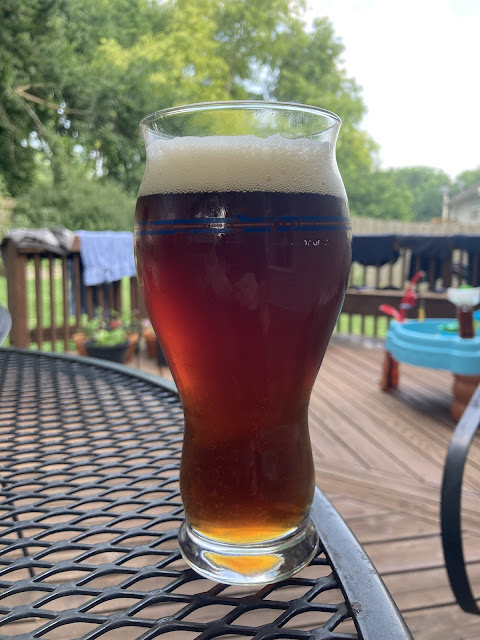Pickwick Brewing
Sunday, October 26, 2025
Honey blonde ale - 2025
Friday, October 24, 2025
Nelson Simcoe pale ale - 2024
In recent years I mainly want to drink a balanced beer. Beers that aren't too dry, too malty, too bitter, too hoppy, or too sweet. The way to achieve that for me has been about 5% abv beers with a low to moderate amount of hops and moderate bitterness. This was just another one of those types of beers. And also allowed me to use up some ingredients. A good beer.
Innkeeper - 2024
Thursday, October 23, 2025
Homegrown hop ale 2025
I was sort of going for an amber ale but I think it's a little too hoppy for the style.
Monday, May 12, 2025
Honkers Ale clone
Saturday, October 5, 2024
SS Minnow Mild
2024 English bitter
Tuesday, August 27, 2024
2023 German Pilsner
Brewed 10/27/23. Took the afternoon off to make it. Started before 1 and finished by 4:30, aside from some cleaning. Maybe record time for me. Final beer of the year.
OG 1.042-43. Brew software estimated 1.048. I used floor malted Bohemian Pilsner which I think I’ve read can lead to lower extract yield.
Kegged 11/6/23. FG 1.012.
I don’t remember much about this beer. It was good, but not so good that it was memorable. It cleared well with whirlfloc only and no gelatin.
8.5 floor malted pils.
1 oz of Halletau Mittelfruh (2.9 AA) at 60, 30, and 5 minutes.
6 grams gypsum in sparge water. Otherwise no water modifications.
Omega Oktoberfest yeast.





















